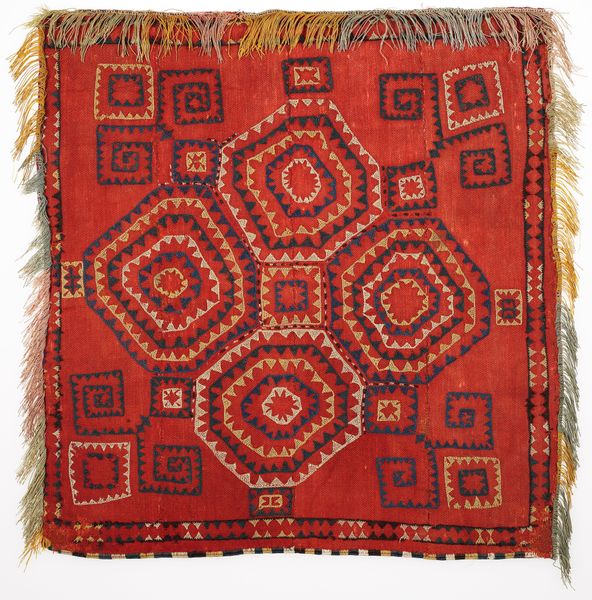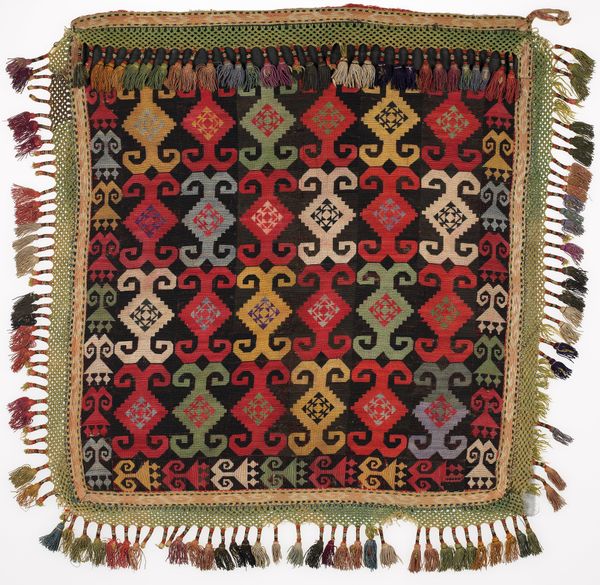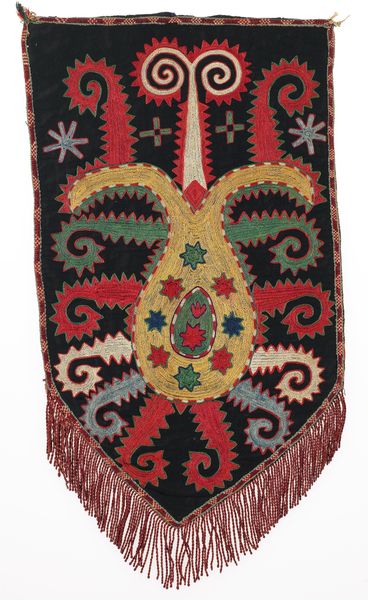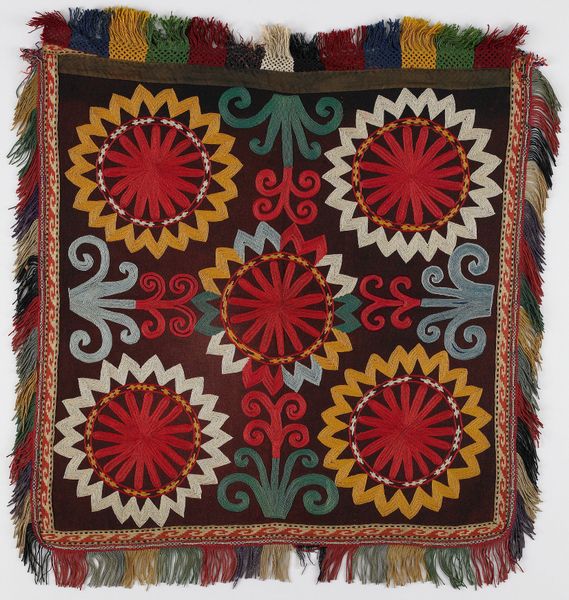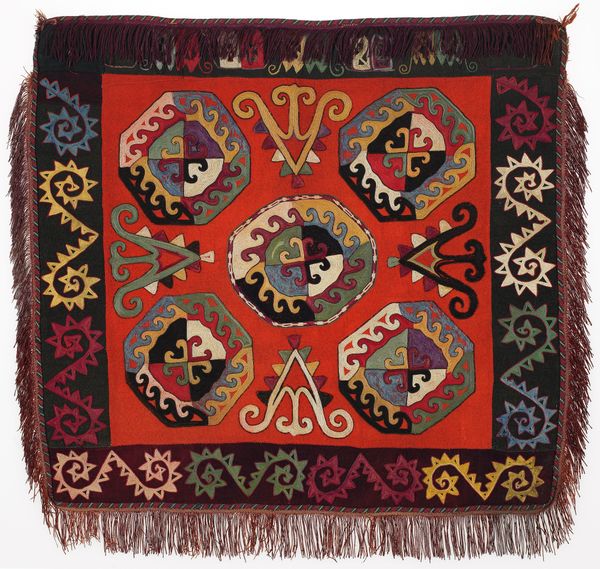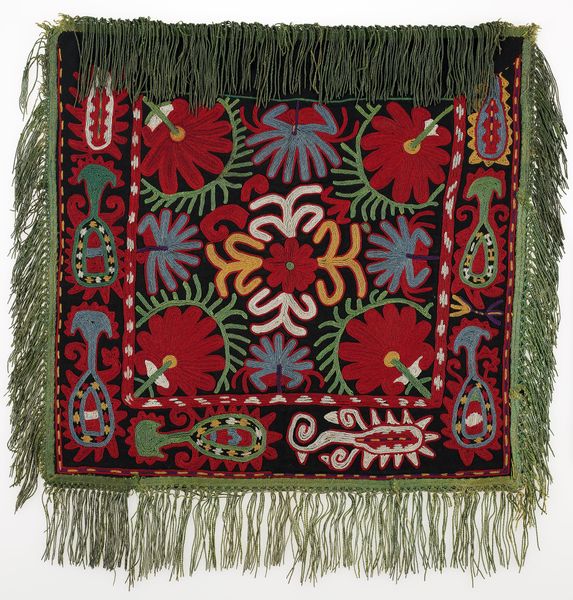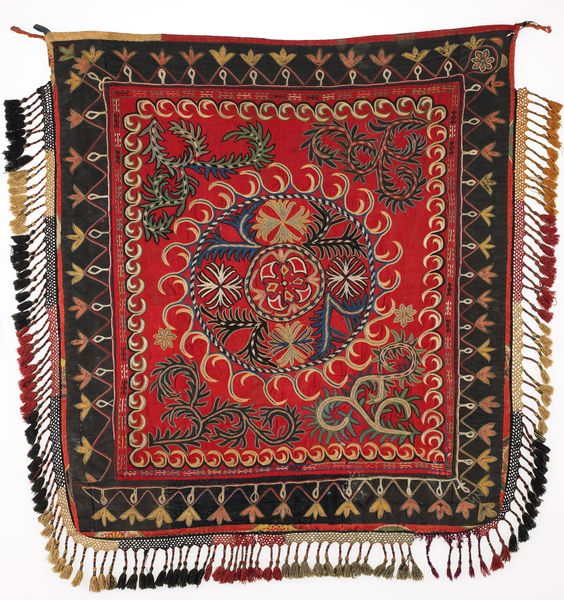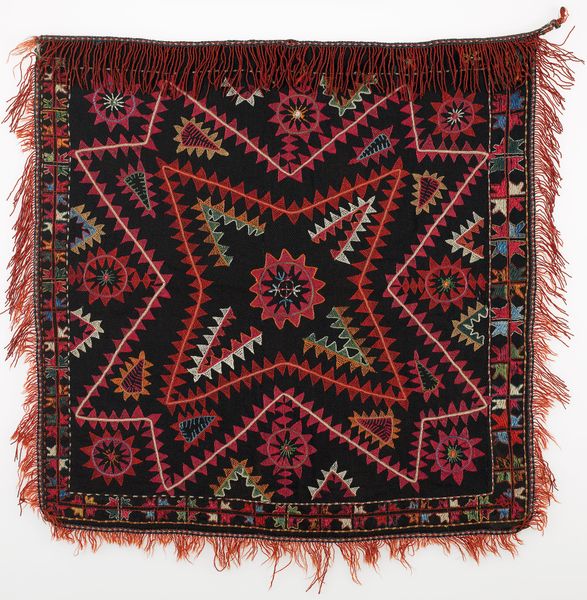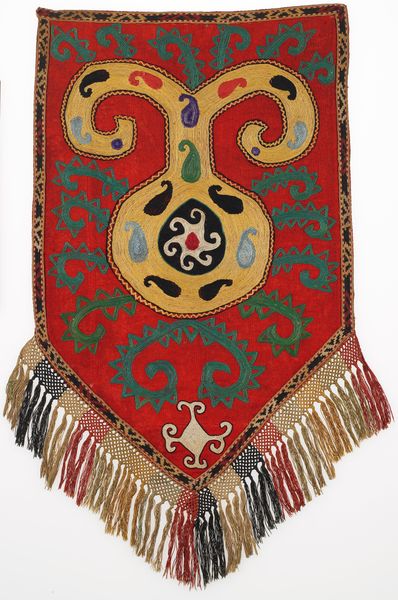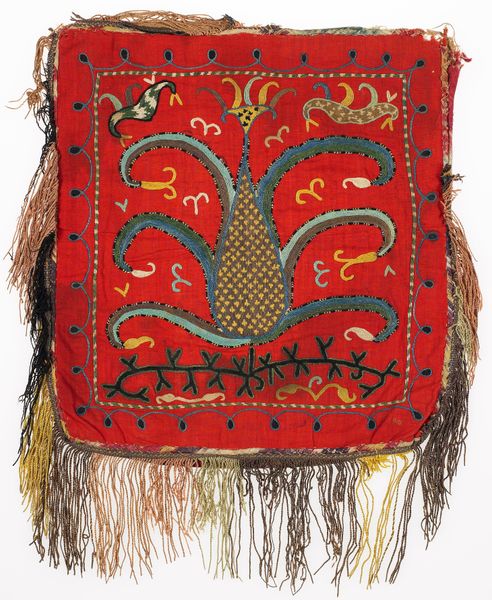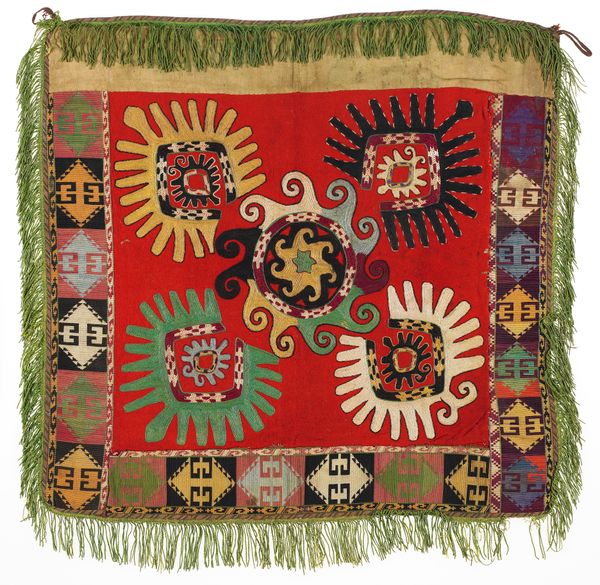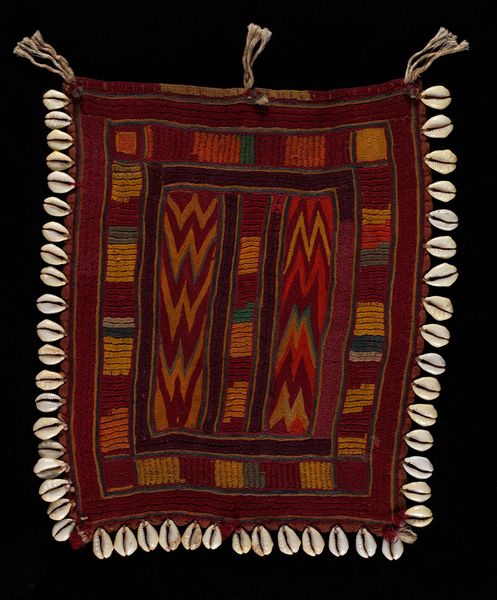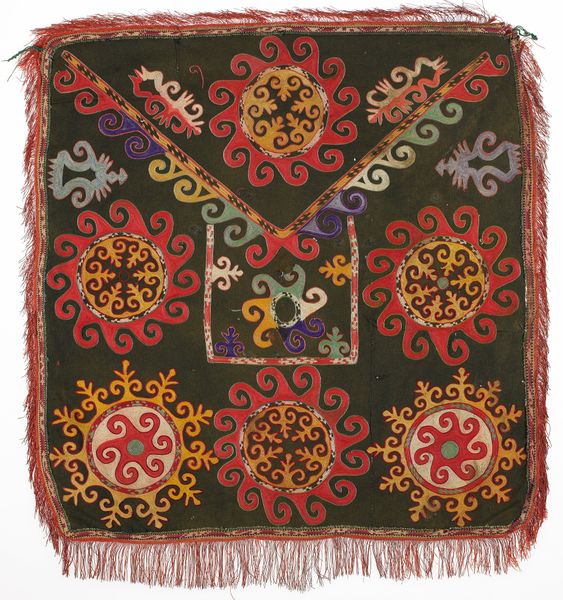
fibre-art, textile
#
pattern heavy
#
natural stone pattern
#
fibre-art
#
naturalistic pattern
#
textile
#
geometric pattern
#
ethnic pattern
#
organic pattern
#
geometric
#
repetition of pattern
#
pattern repetition
#
textile design
#
layered pattern
Dimensions: 37 x 36 in. (93.98 x 91.44 cm)
Copyright: Public Domain
Editor: So, here we have a "Tent Hanging" from Dasht-i-Kipchak, made around the 20th century from textile—silk and cotton weave. It's incredibly vibrant; the patterns are dizzying in the best way! What strikes you about the piece? Curator: Immediately, I am drawn to the composition's rigorous geometry. Note how the artist employs a series of nested squares to structure the field. How does that layering contribute to the visual experience? Editor: I think the layered patterns, particularly the square within a square, draw your eye inwards, creating this sense of depth and complexity even though it's a flat surface. Curator: Precisely. And what of the color choices? The juxtaposition of the red ground against the darker central field... observe the intricate dance between positive and negative space as the embroidered elements articulate that central space. Editor: The red does feel grounding, maybe energetic. The darker middle contrasts nicely and showcases the patterns. But what about all those patterns and symbols? Do you think there's an underlying structure that might unite them, beyond just the obvious geometric arrangement? Curator: I would argue the underlying structure *is* the unifying force. Consider how each motif, while seemingly unique, echoes the circularity of the central emblem. They all interrelate, bounded by these squares that constitute an unmistakable visual rhyme, and that’s what really grabs the eye. It's the arrangement more than the content that resonates here. What do you think of the materiality of it? The textile weave itself? Editor: Seeing it as simply structure is an intriguing point that hadn't occurred to me! Up close, the varying thickness of the embroidery thread and the slightly uneven weave adds a depth I previously hadn't noticed! Curator: The essence of art, often lies in its intrinsic, visual properties, in how elements are arranged. We see a careful negotiation between surface and depth, between pattern and form. Editor: I’ve never thought about textiles this way! I’ve learned to appreciate the artistic statement of its geometry and interplay. Curator: And hopefully recognize how form transcends surface.
Comments
No comments
Be the first to comment and join the conversation on the ultimate creative platform.
